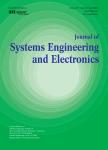Threat evaluation method of warships formation air defense based on AR(p)-DITOPSIS
Threat evaluation method of warships formation air defense based on AR(p)-DITOPSIS作者机构:Coastal Defense CollegeNaval Aviation University
出 版 物:《Journal of Systems Engineering and Electronics》 (系统工程与电子技术(英文版))
年 卷 期:2019年第30卷第2期
页 面:297-307页
核心收录:
学科分类:0808[工学-电气工程] 07[理学] 0809[工学-电子科学与技术(可授工学、理学学位)] 0802[工学-机械工程] 0811[工学-控制科学与工程] 0812[工学-计算机科学与技术(可授工学、理学学位)]
基 金:supported by the Postdoctoral Science Foundation of China(2013T60923)
主 题:AR(p) model Kullback-Leibler divergence (KLD) dynamic improved technique for order preference by similarity to ideal solution (DITOPSIS) time series threat evaluation
摘 要:For the target threat evaluation of warships formation air defense, the sample data are frequently insufficient and even incomplete. The existing evaluation methods rely too much on expertise and are difficult to carry out for the dynamic evaluation on time series. In order to solve these problems, a threat evaluation method based on the AR(p)(auto regressive(AR))-dynamic improved technique for order preference by similarity to ideal solution(DITOPSIS) method is proposed. The AR(p) model is adopted to predict the missing data on the time series. Then, the entropy weight method is applied to solve each index weight at the objective point. Kullback-Leibler divergence(KLD) is used to improve the traditional TOPSIS, and to carry out the target threat evaluation. The Poisson distribution is used to assign the weight value.Simulation results show that the improved AR(p)-DITOPSIS threat evaluation method can synthetically take into account the target threat degree in time series and is more suitable for the threat evaluation under the condition of missing the target data than the traditional TOPSIS method.



